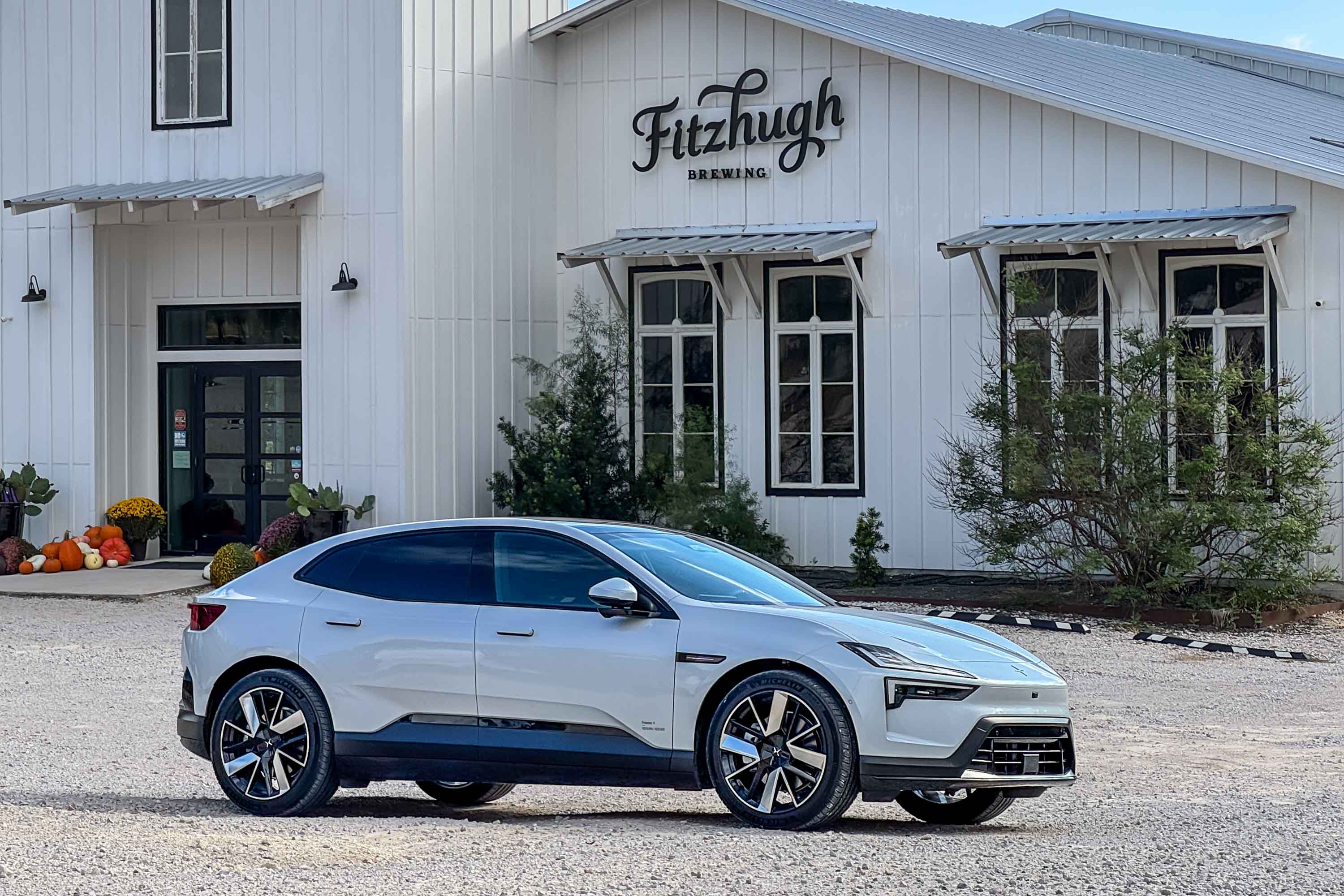As I sink into the driver’s seat and adjust the rear-view mirror, I only see the back seat, no window to view the rear of the car. But flip the lever at the base of the mirror and transform it into an illuminated screen showing a clear, zoomed-in view of what’s behind.
I put it in reverse, and the 15.4-inch center display gives additional vantage points for a panoramic scene of what’s behind. I counted nine cameras on the Polestar 4 in total. It sees all.
Polestar’s fourth model takes a crossover SUV coupe shape, but with more fastback sedan-like dimensions and ground clearance. No matter, two electric motors belt out more than 530 horsepower to hustle around up to five passengers and plenty of forward-thinking tech without combusting a drop of gasoline.
Given such stats, I happily jumped on a plane to Austin, Texas, to spend the day in the Polestar 4. I wanted to see, first-hand, how this European electric car brand fills its lineup. Is the 4 a compelling alternative to a hybrid or ICE-powered two-row premium crossover? Polestar gave me about 150 miles on a wide variety of roads to find out.
In short: Just like the 3, the Polestar 4 wins again in the styling department. Sleek lines tightly wrap around the platform to form a functional, minimalist, fashion-forward shape. I quickly felt comfortable reversing without a rear windshield, courtesy of several high-definition cameras providing a comprehensive view of what’s behind. And nothing beats the immediate response and pull of electricity. 280 miles of range feels only so-so these days, but the 4 makes a very strong case for a city and day trip car.
-
Immediate response and impressive pull from the dual motor powertrain -
Android Automotive OS works seamlessly, Google Built-in is a plus -
Second row provides space and comfort for adults -
Large, easy-to-read 14.7-in. head-up display
-
One-pedal driving a touch underwhelming, wished for more peak decel -
Only some of the driving aids are standard -
Massive sea of plastic under the hood, with but a tiny front cargo area -
No ventilated front seats, even if you add the $5,500 Plus Pack
2026 Polestar 4 Review
Follow the Chronology
Since the beginning, Polestar has named cars in order of their inception.
The Polestar 1, a limited-edition, plug-in hybrid Supercar, kicked the brand off with a splash. But only 1,500 examples left the factory before the lights shut off. From there, we saw the Polestar 2, a 181-inch-long hatchback, and then the Polestar 3, a 193-inch-long SUV. As new cars arrived, they also grew in size and price. Easy.
But now the 4 arrives. The newest, hence highest numerical Polestar actually slots between the 2 and 3 in both size and price. Moreover, Polestar already revealed the 5, a large sedan; the 6, a two-door sports car; and the 7, another SUV. Given that, we will have to learn to mentally disassociate the number of the model with its size and prominence.
Things will get even more confusing as second generations arrive. But, I suppose we’ll cross that bridge when we come to it.
While the 4 is indeed smaller than the 3, not by much. Polestar calls the 190.5-inch-long 4 a crossover SUV coupe. But with just 6.5 inches of ground clearance and a total height of 60.4 inches. It’s much more of a fastback sedan to me.
That said, it’s 81.4 inches wide, which helps for space inside. And the 4 rides on a long, 118.0-inch wheelbase. Similar to other EVs, with both short front and rear overhangs.
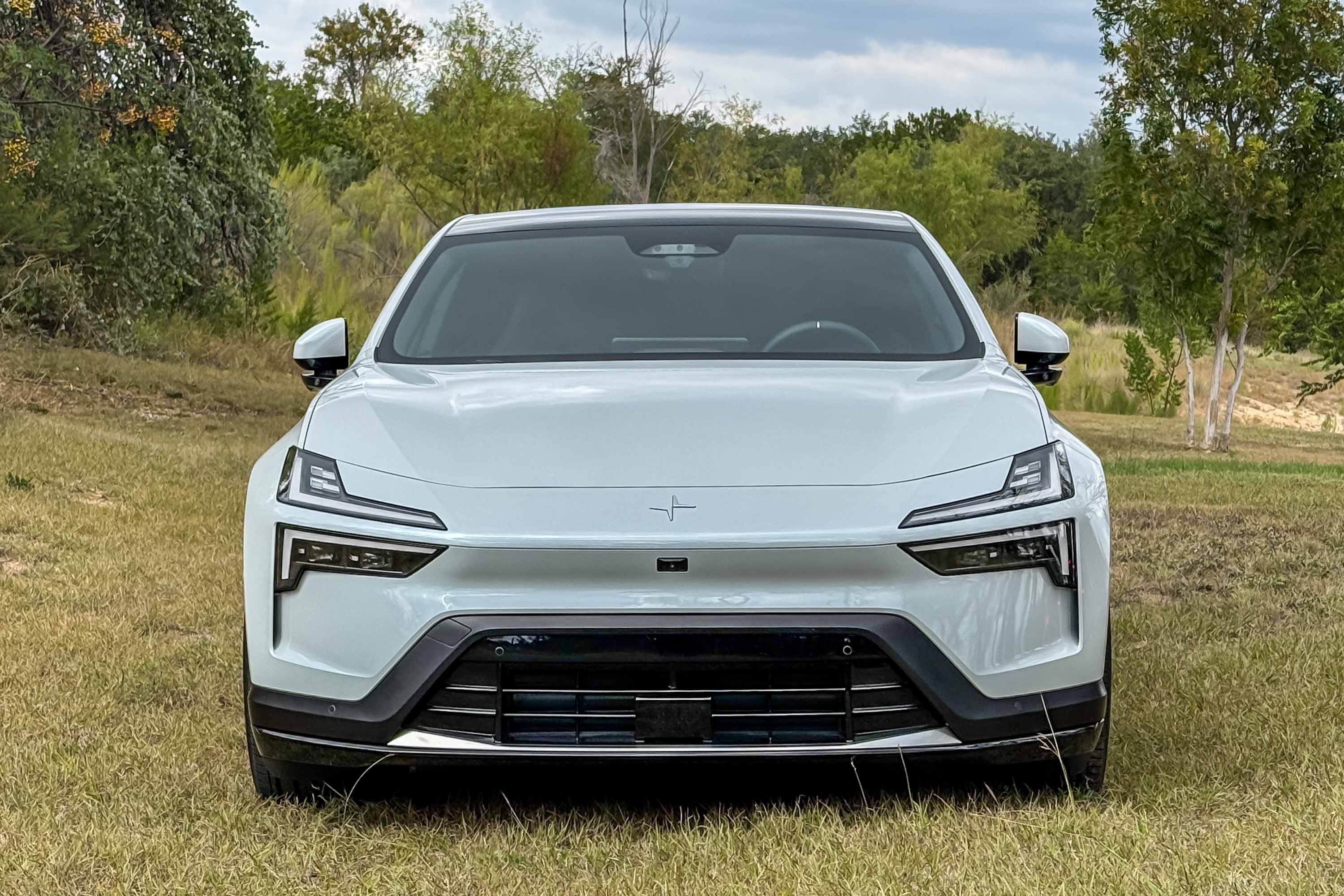

And Polestar designers continue to make excellent use of those short overhangs and wide dimensions. The front clip starts quite low with a bifurcated version of the long-used “Thor’s Hammer” DRLs resting next to thin main beams, all LED, of course. From there, the hood gracefully rises over the front axle, creating subtle fender flares before meeting the base of the steeply raked windshield.
That glass ends, but for a moment as the panoramic glass roof arcs over the cabin. The glass ends aft of the rear doors, where a gloss black panel begins, holding two cameras up top. That piece converges with a body-colored panel, which itself eventually meets the full-width taillights.
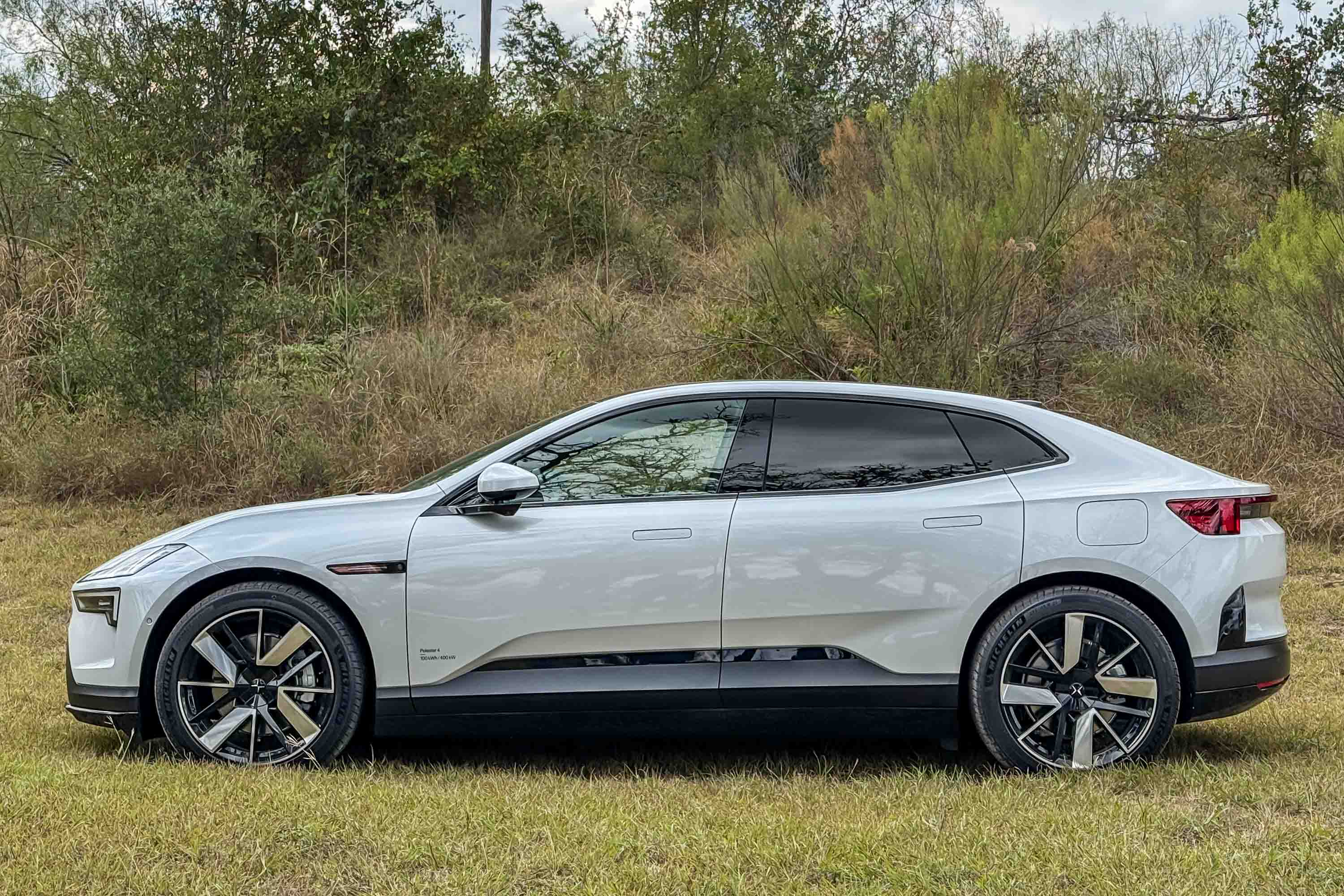

In profile, you see folding sideview mirrors, electrically retracting flush door handles, the charge port on the driver’s side, and a couple of sharply cut character lines in the lower doors.
The Polestar 4 rides on at least 20-inch wheels; up to 22-inch wheels are available. My test car was equipped with 21-inch wheels and Michelin Primacy all-season tires.
Space-Age Cabin Space
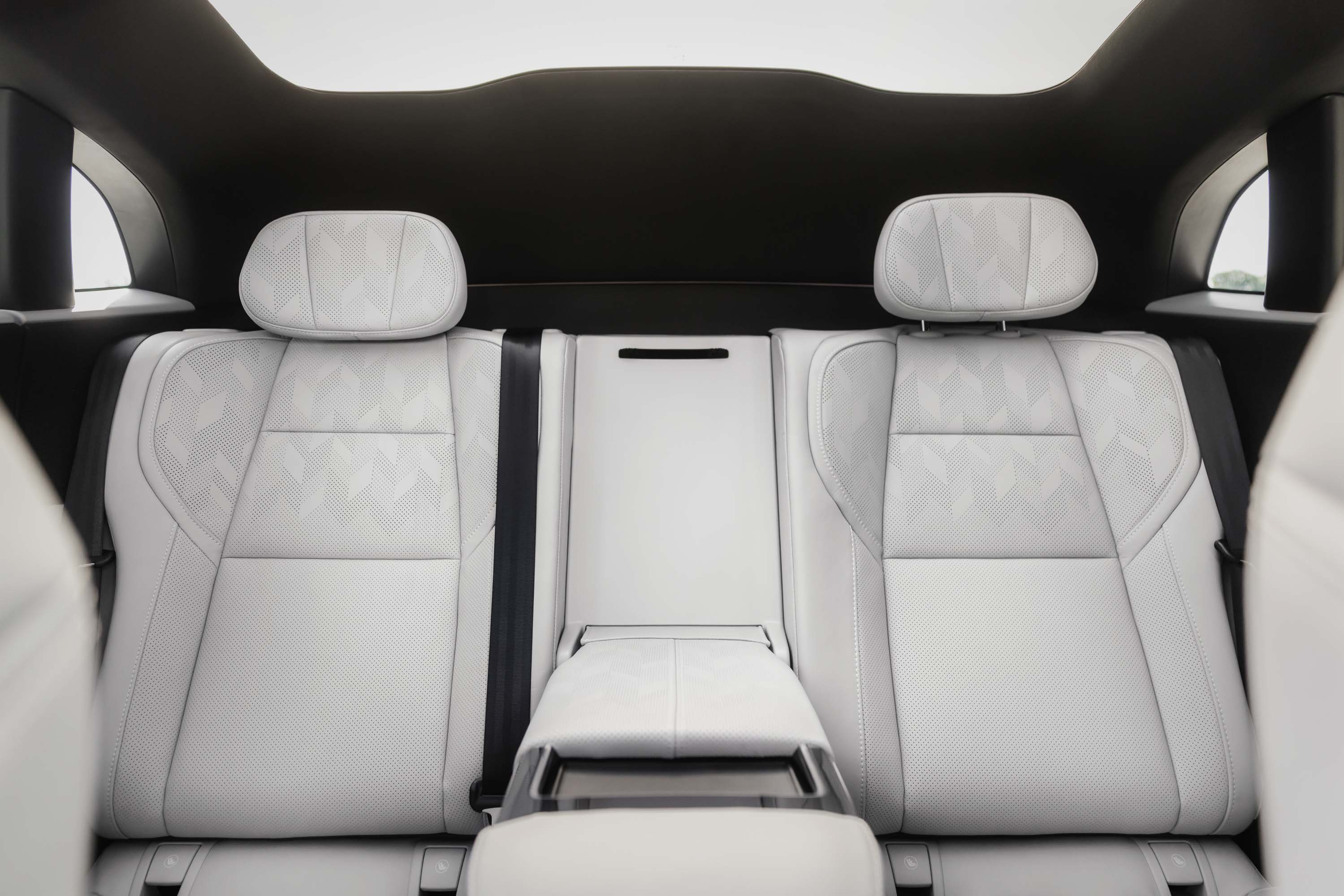

Polestar claims the 4 offers better second-row space because it nixed the rear windshield. Apparently, it allowed them to push the second row rearward and more upright. I can attest that the second row offers plenty of room for my 5-foot, 11-inch frame and that’s head-to-toe.
Courtesy of the $5,500 Plus pack installed on my test car, I also enjoyed a third climate control zone, my own 5.7-inch screen, and heated rear seats. And because the 4 measures over 80 inches wide, rear passengers get a wide center armrest, presuming a third passenger doesn’t occupy the space.
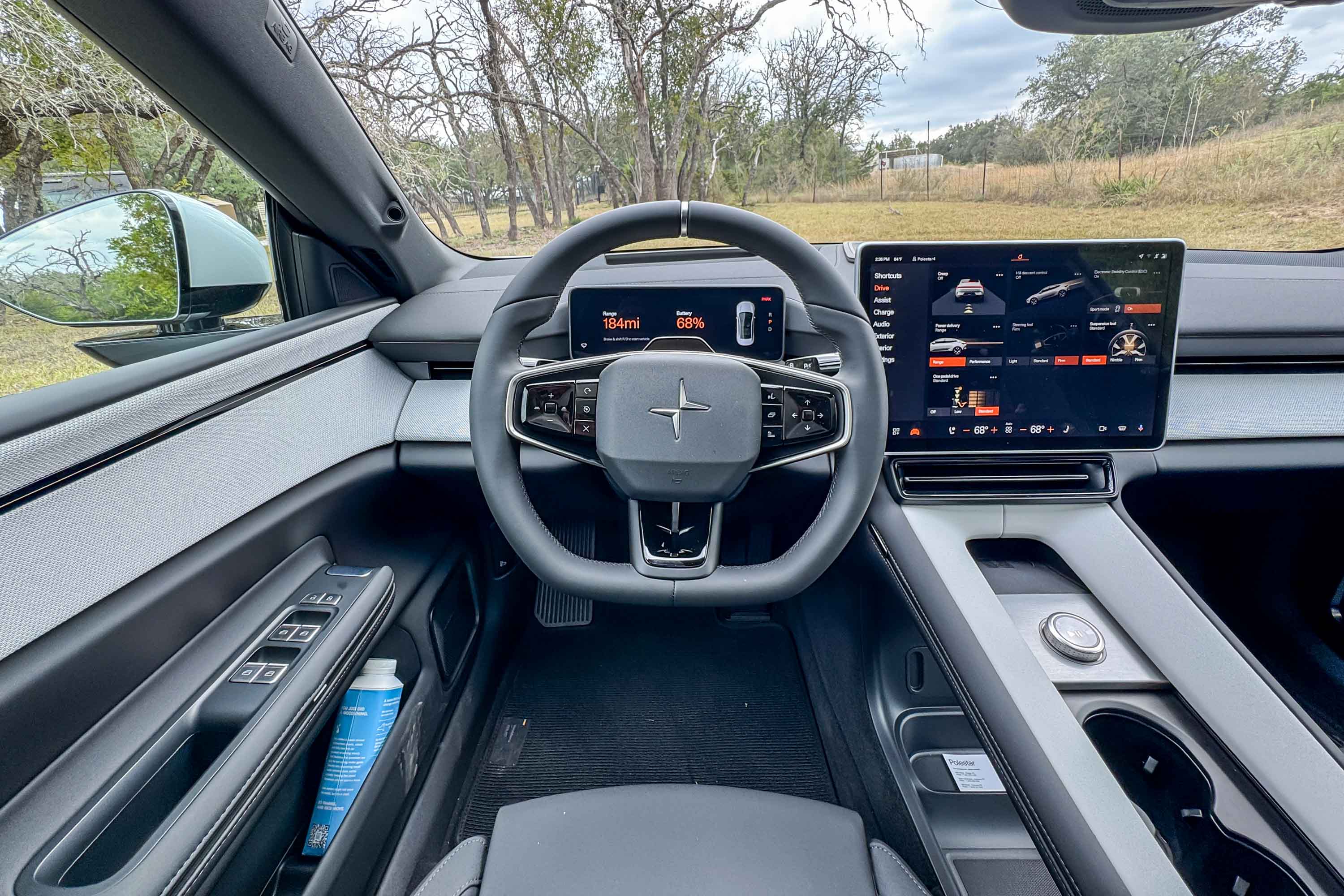

Up front, the Plus pack also supplies the driver with a heated steering wheel (the front seats already come heated) and a generous, 14.7-inch head-up display to monitor pertinent info while driving. That’s in addition to the standard 10.2-inch digital instrument cluster and 15.4-inch center display, of course.
The latter operates on Google’s Android Automotive OS system. That, of course, connects with Android Auto, but also Apple CarPlay. You also get Google Built-in: Play, Maps, and Assistant. All work splendidly. Polestar added its own effects to Google Maps to personalize the system a bit.
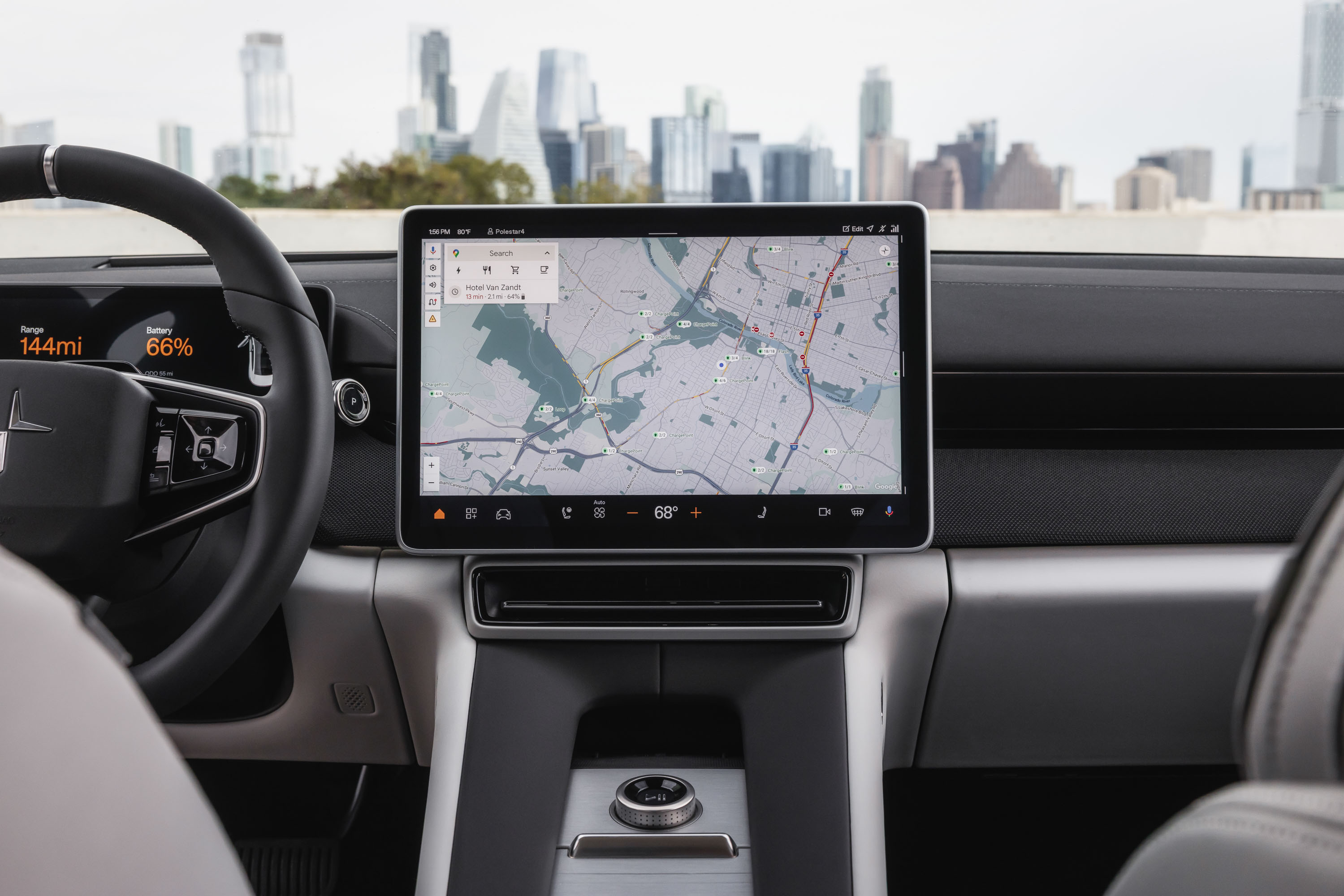

Generally, the system operates smoothly and lag-free. It’s also more intuitive than the system on the Polestar 3. Though, I’m old enough to wish for more buttons and fewer menus. For example, it still takes a moment to do things like adjust the sideview mirrors because the 4 offers no dedicated switchgear to handle the task.
The Cameras See All
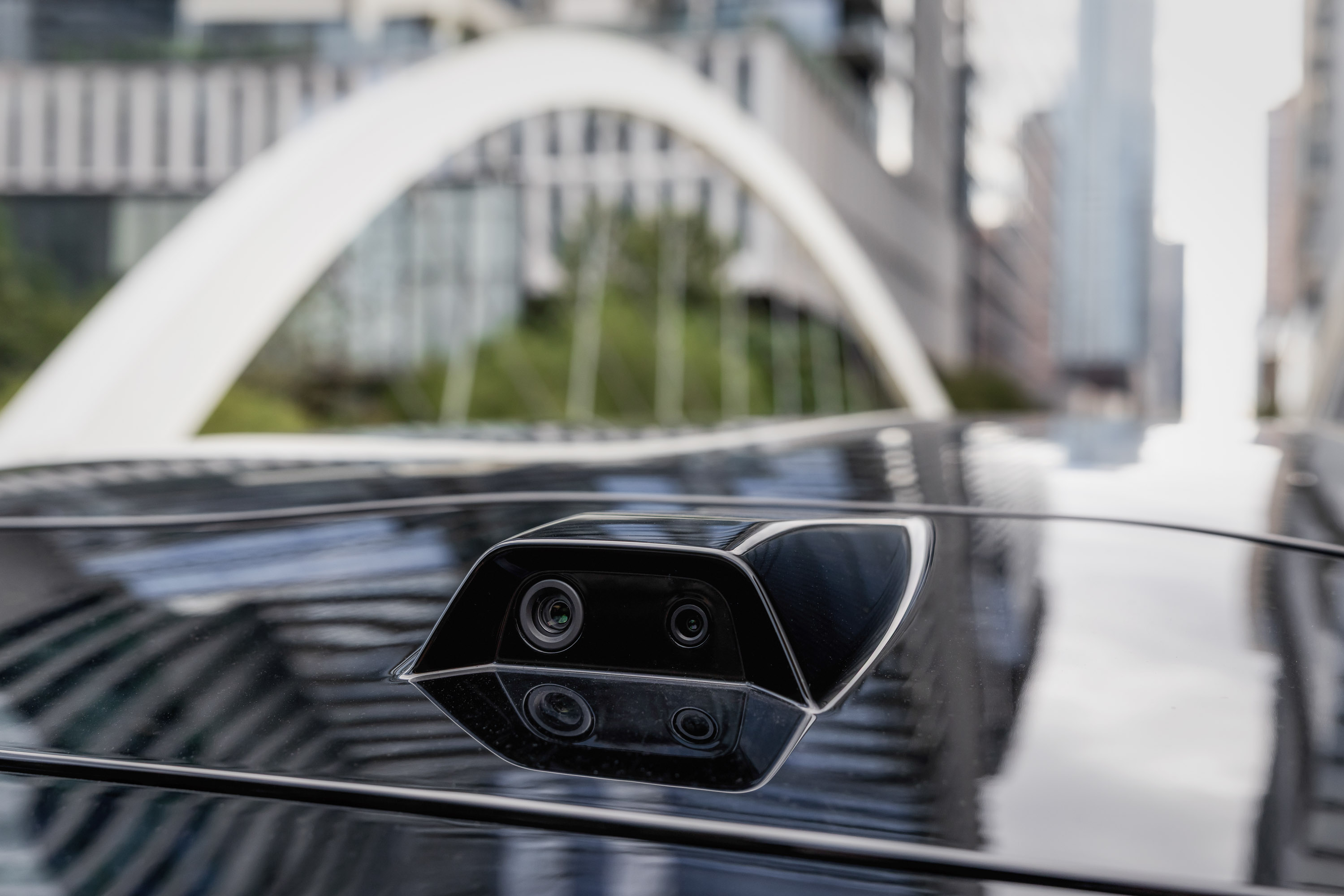

Without a rear windshield, Polestar supplied the 4 with a rearview mirror that doubles as a screen for a camera mounted on the roof in back. In fact, there are two.
The one for the mirror, which zooms in a bit and offers HD-quality viewing of what’s going on behind you. In fact, I got a very good look at the frustrated face of the driver I pulled in front of in heavy traffic toward the end of the day.
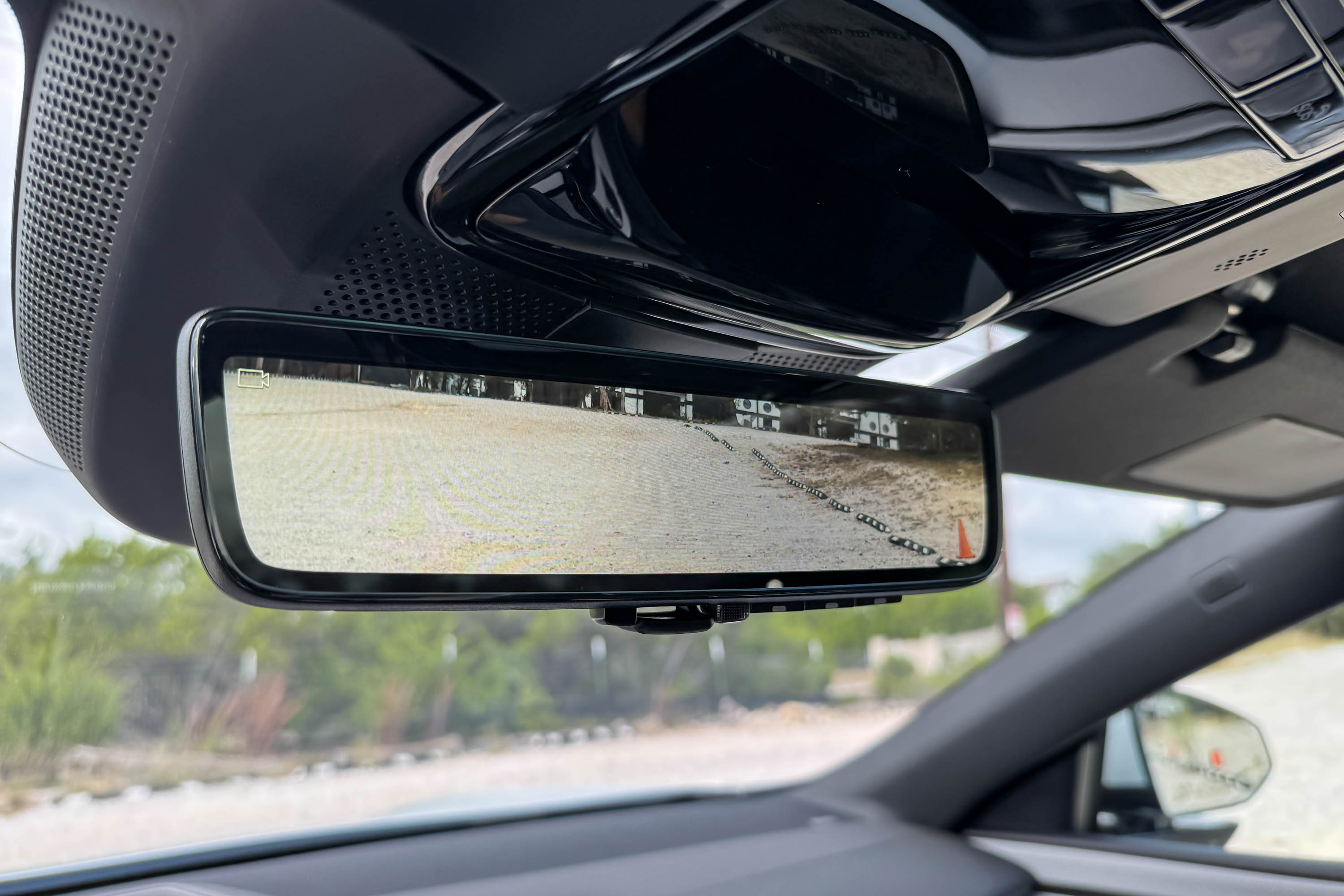

The other camera gets shown on the center display. That offers more realistic viewing of what’s going on immediately behind the 4, with corners of the car in view for spatial awareness. From there, each sideview mirror gets three cameras mounted at various angles to give you a very good look at all 360 degrees of the 4’s vicinity. For good measure, Polestar added a ninth camera up front.
This is, bar none, the highest quality camera system I’ve seen from the factory. It’s brilliant; it took me mere seconds to completely forget about the non-existent rear windshield and confidently maneuver the car around tight spaces. And it’s standard equipment.
Get Frunky
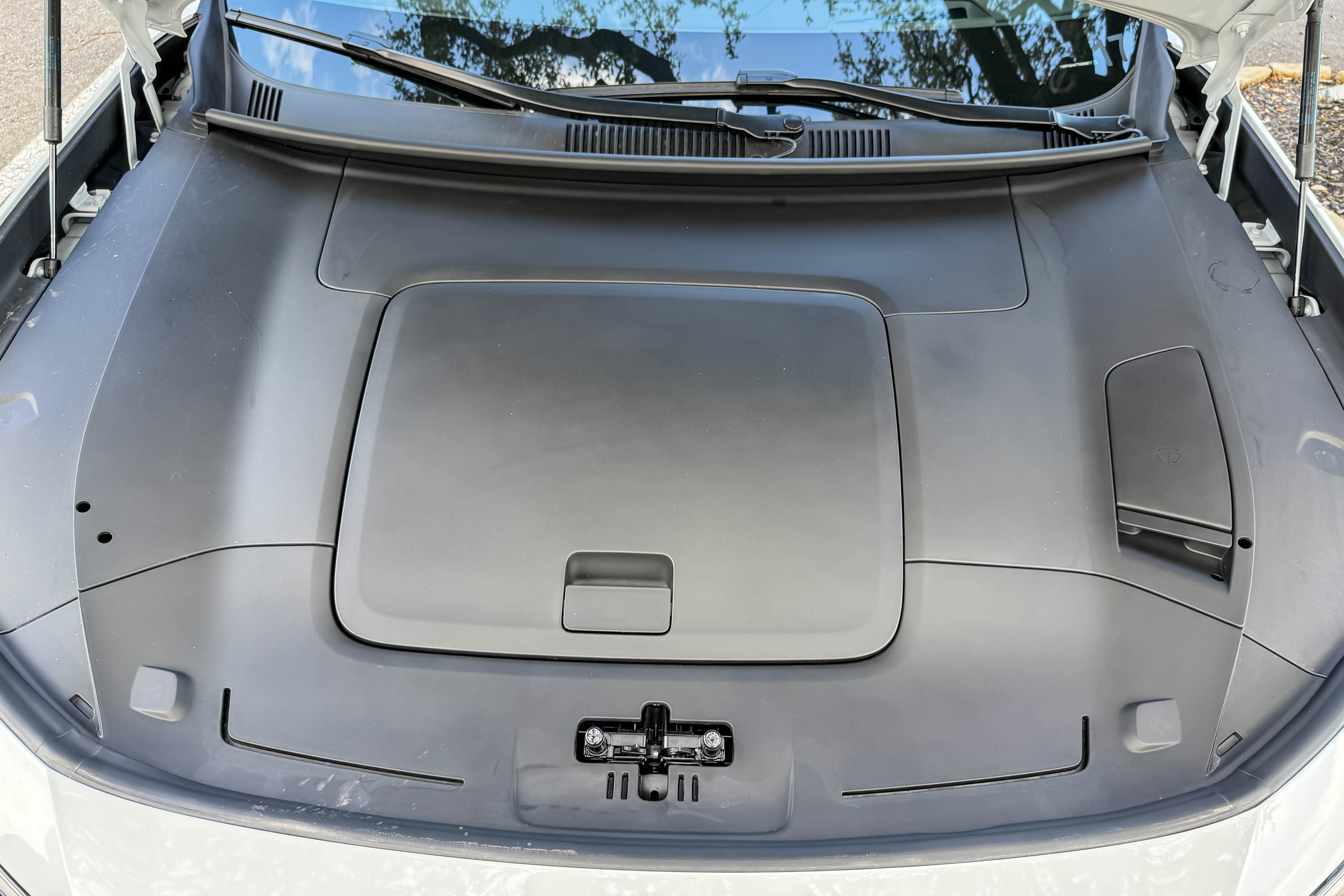

Yes. The Polestar 4 offers storage space under the hood, you know, a “frunk.” No. It’s not a lot of space, half of a cubic foot, to be precise.
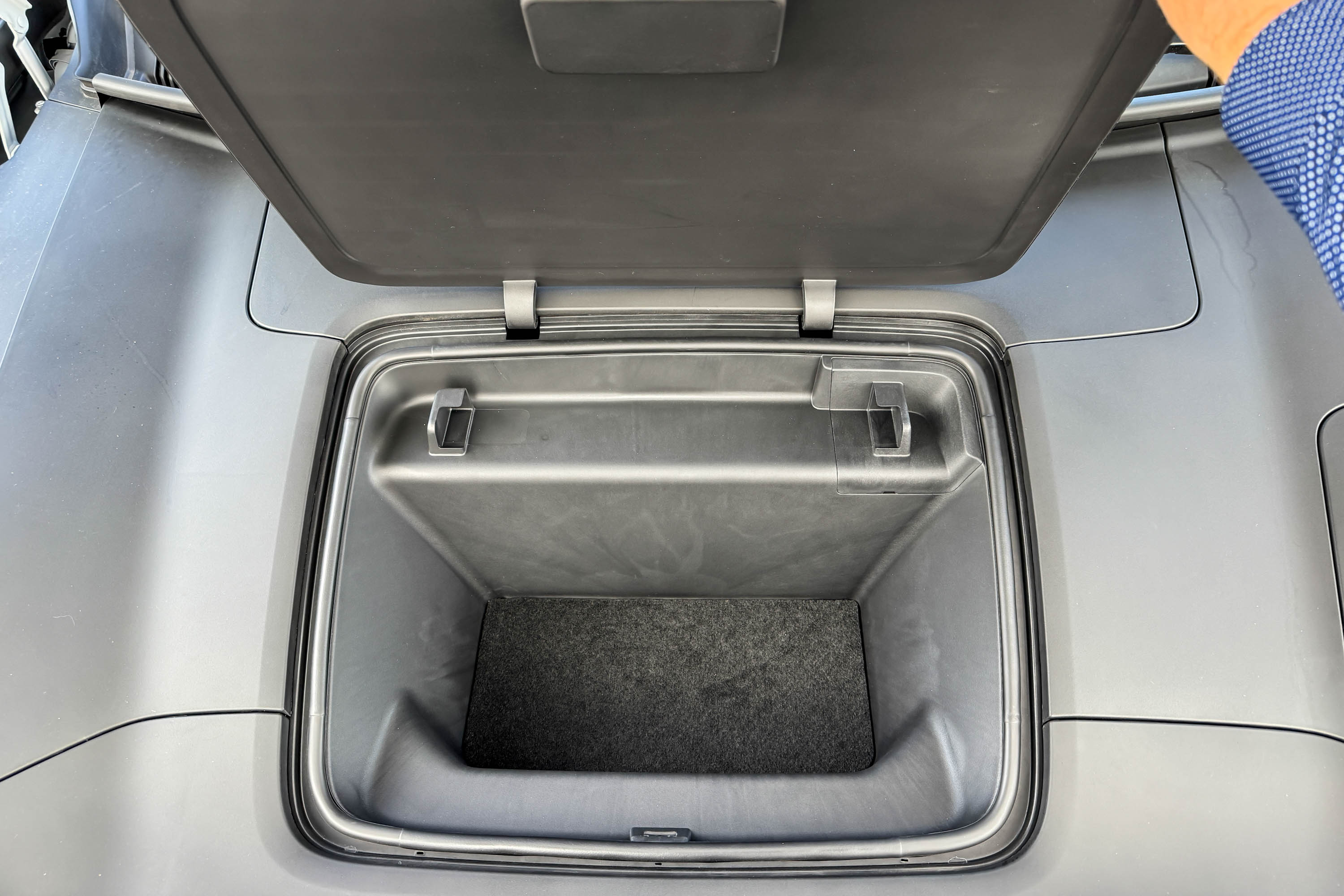

Open the hood, and your eyes gaze upon a sea of black plastic. In the center, a small handle allows you to lift the lid on the small frunk compartment. It’s less than a foot deep, about 9 inches wide, and 15 inches long. Good for nice emergency car needs, or things of that sort.
In back, the standard power liftgate reveals 18.6 cubic feet of space. Not bad for a car this size. Pop off the vertically mounted privacy panel and fold the second row down to increase storage to 54.2 cubic feet. Respectable.
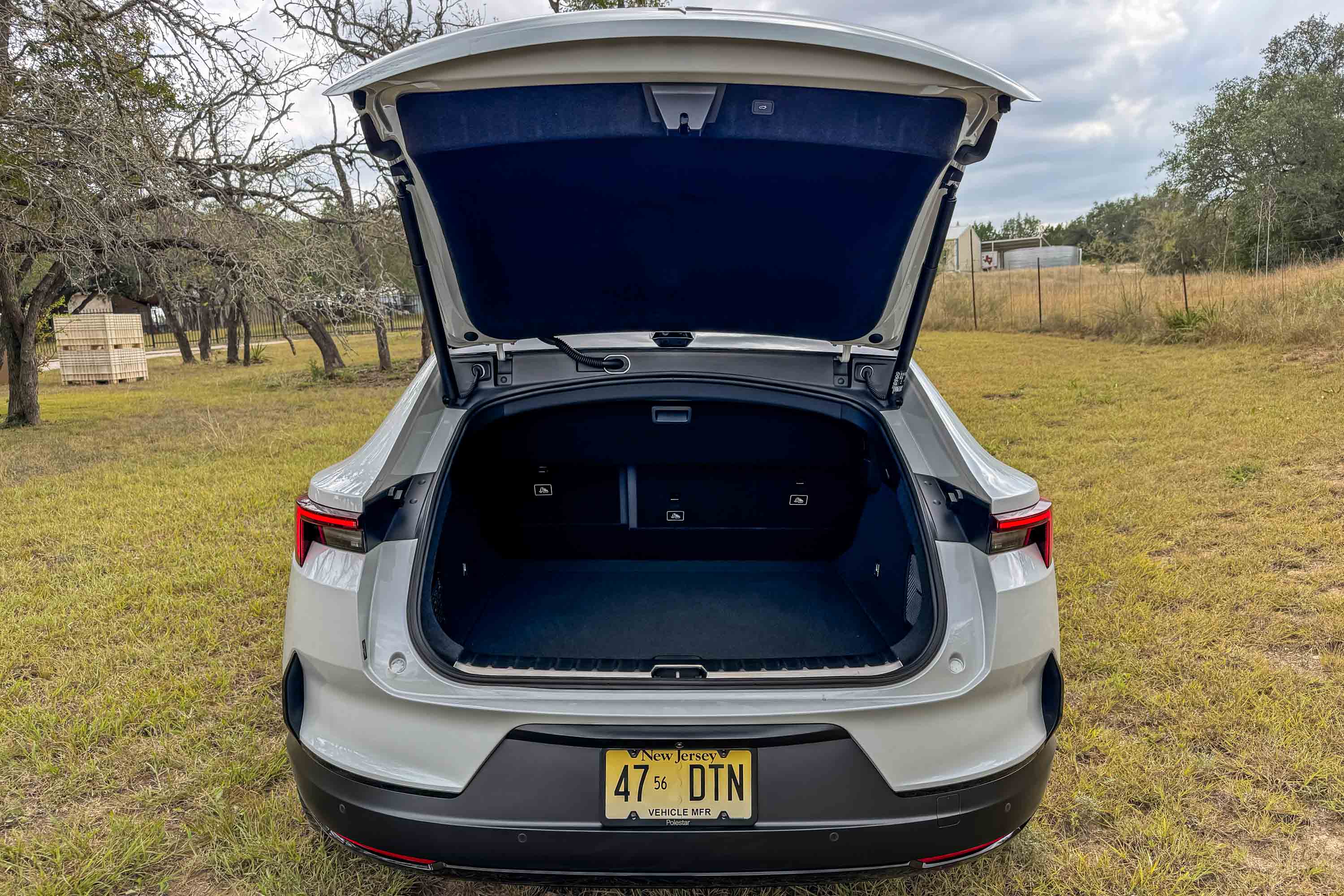

Dual Motor Muscle
The base 4 gets power from a single electric motor mounted on the rear axle. It makes 268 horsepower and 253 pound-feet of torque. Plenty of pull to haul around this two-and-a-half-ton machine.
Energy comes from a 100kWh lithium-ion battery pack. That’s good for 310 miles of range, according to the EPA.
If you spend an additional $6,500, Polestar adds a second electric motor of equal power on the front axle. With it, outputs double to 536 horsepower and 506 pound-feet of torque. By the way, the Polestar 4 says 544 horsepower on the front quarter panel, that’s metric horsepower, which is 1.4% different from U.S. spec, or SAE horsepower. Either way, it’s a lot.
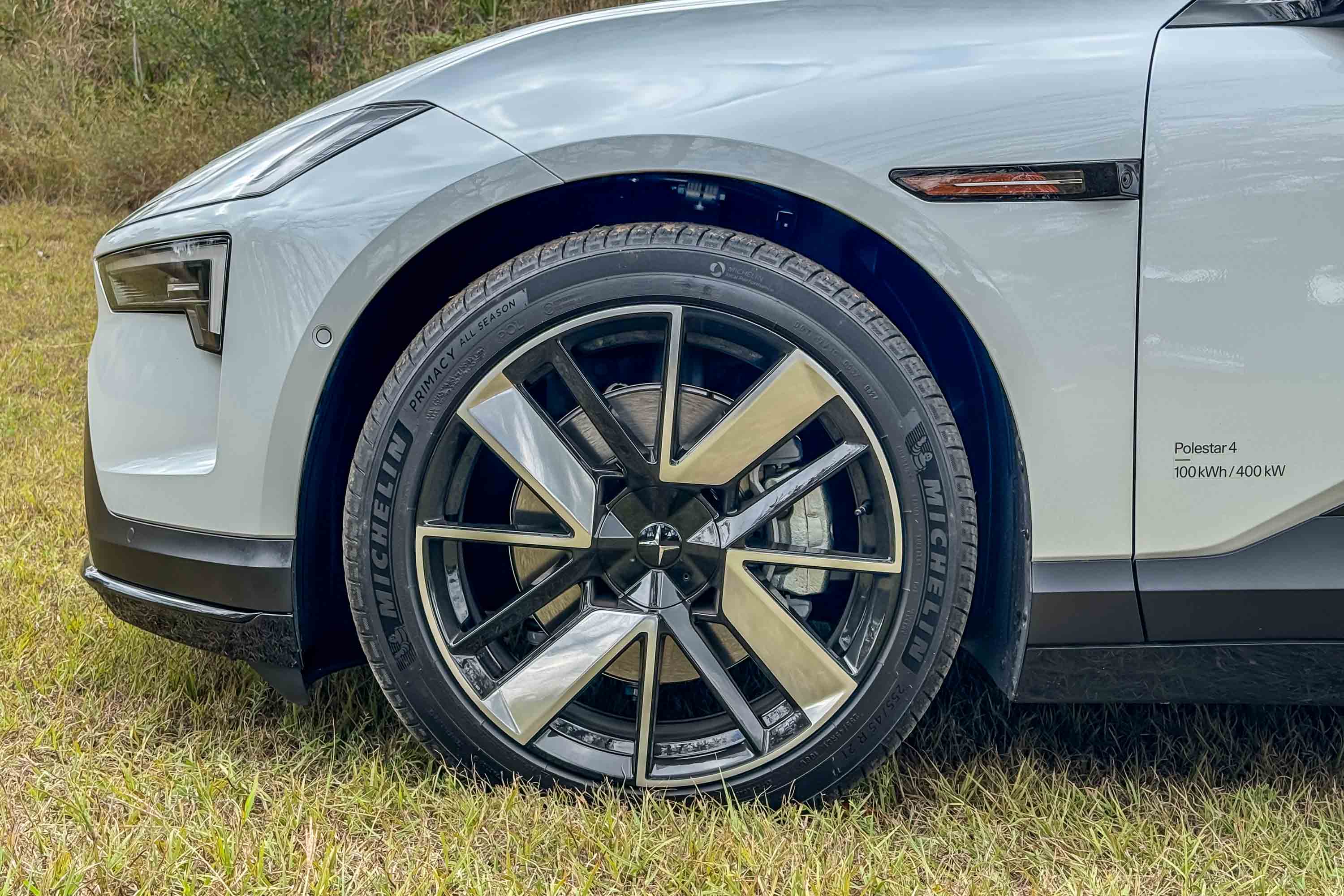

Courtesy of immediate response electric propulsion, every stab of the accelerator flings back your neck and pins you to the seat. It’s a guilty pleasure to quickly slot into spots on busy byways or make quick work of a pass on a remote two-lane.
Bury the accelerator from a standstill, and the 4 seemingly stands on its hind legs and bolts forward, spinning up the front tires while simultaneously maintaining what feels like a full G of accelerative force.
The extra motor increases curb weight to just under 5,200 pounds. But with all that extra power, acceleration times drop to a near-supercar quick 3.7 seconds to reach 60 mph from rest.


Quick note on AWD: with the dual motor, the 4 always defaults to all-wheel drive before you move. However, if the system deems the front axle unnecessary to meet the driver’s demands, it decouples it until the system senses it’s needed.
Going all-wheel drive drops the driving range to 280 miles on a full charge. That’s about average these days. Speaking of charging, the 4 uses a 400V system that can accept as much as 200 kW from a DC fast charger. The factory port is a CCS, not NACS.
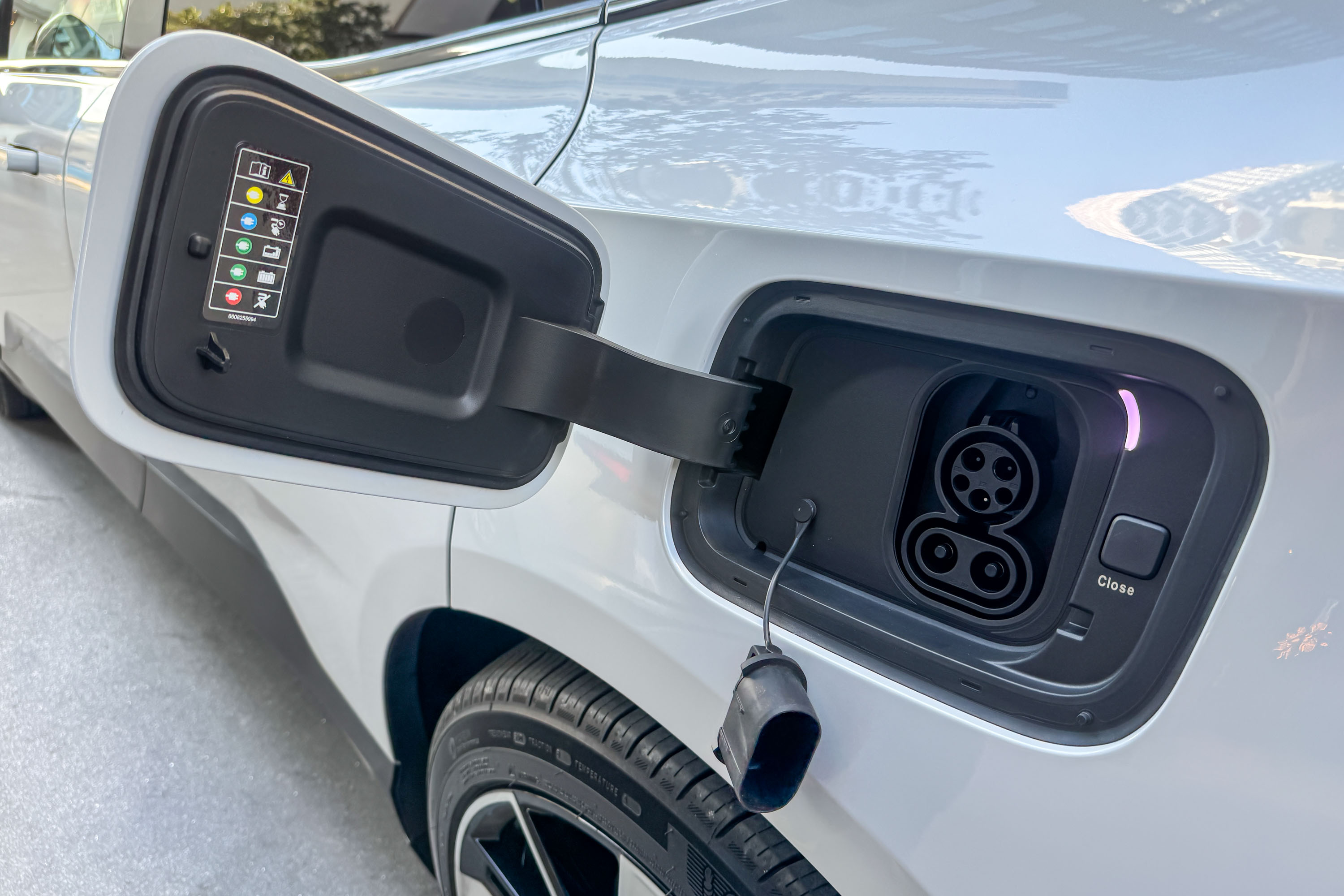

Polestar says you’ll need 30 minutes to replenish the battery to an 80% state of charge (SOC) from 10%. Utilize a level 2 charger at home, and a fully depleted battery will reach full charge in 11 hours.
Hit the Road
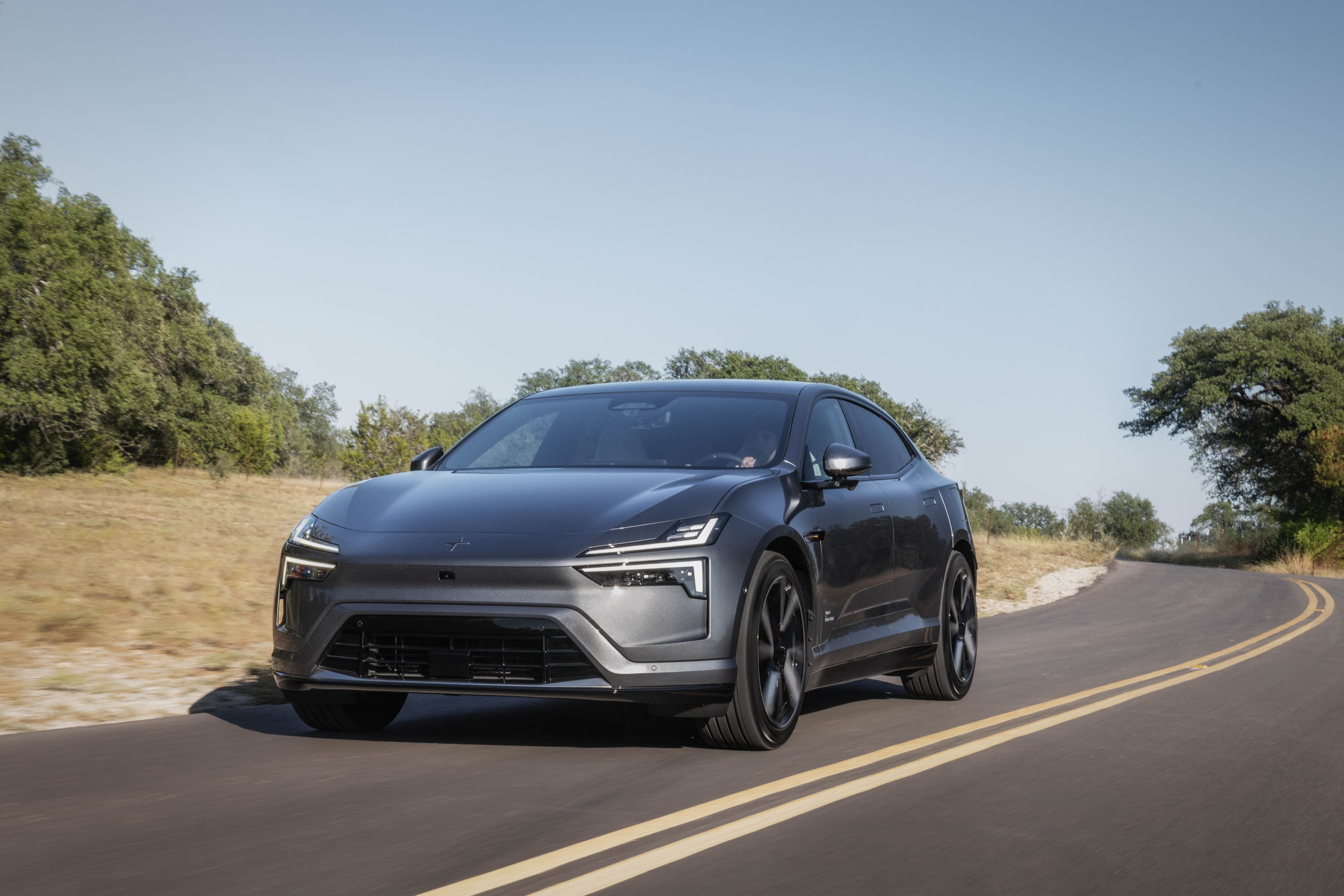

Despite the heavier curb weight, given the 4’s size, Polestar tuned a nicely balanced chassis with a quick-reacting front-end. It helps that much of the weight lies in the center of the vehicle and way down low.
The dual motor 4 also comes standard with adaptive shock absorbers. And the center display easily allows you to adjust among three firmness settings in the vehicle menu.
In the softest setting, the 4 rides comfortably, gliding over bumps and uneven roads with little trouble. Our test drive included several speed bumps and a few cattle grids (spaced out parallel bars on the road). It handled it all with comfort.
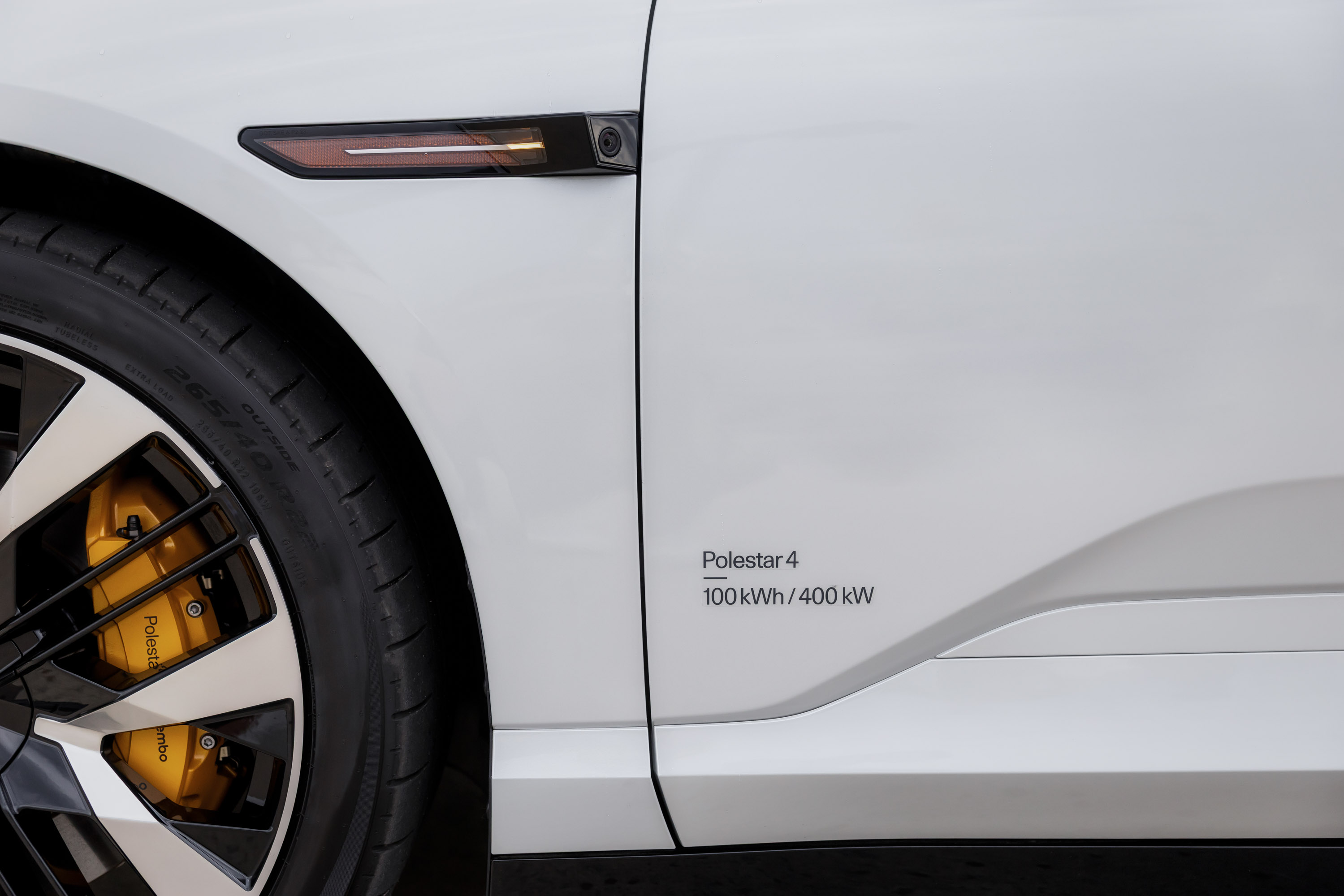

Yet, switch them to the firmest setting, and the 4 allows little body roll, even with swift cranking of the wheel. Really hustle the 4 around a corner, and you feel a bit of understeer, but the chassis balance feels about spot on for this vehicle class.
And the seats only add to the occasion, offering plenty of comfort and higher-than-expected support.
My only demerit came from testing one pedal driving. Like the shocks, you choose between three settings: off, low recuperation, and full recuperation. At the highest setting, you get about 0.3 G of decel. And, thankfully, it does bring the car to a complete stop. But GM’s system offers over 0.4 G of decel, which allows one-pedal driving in all but emergencies. Given that Polestar is an EV brand, I wish it led in this department.
On the plus side, it’s easy to modulate recuperation levels with the accelerator pedal and slow down smoothly.
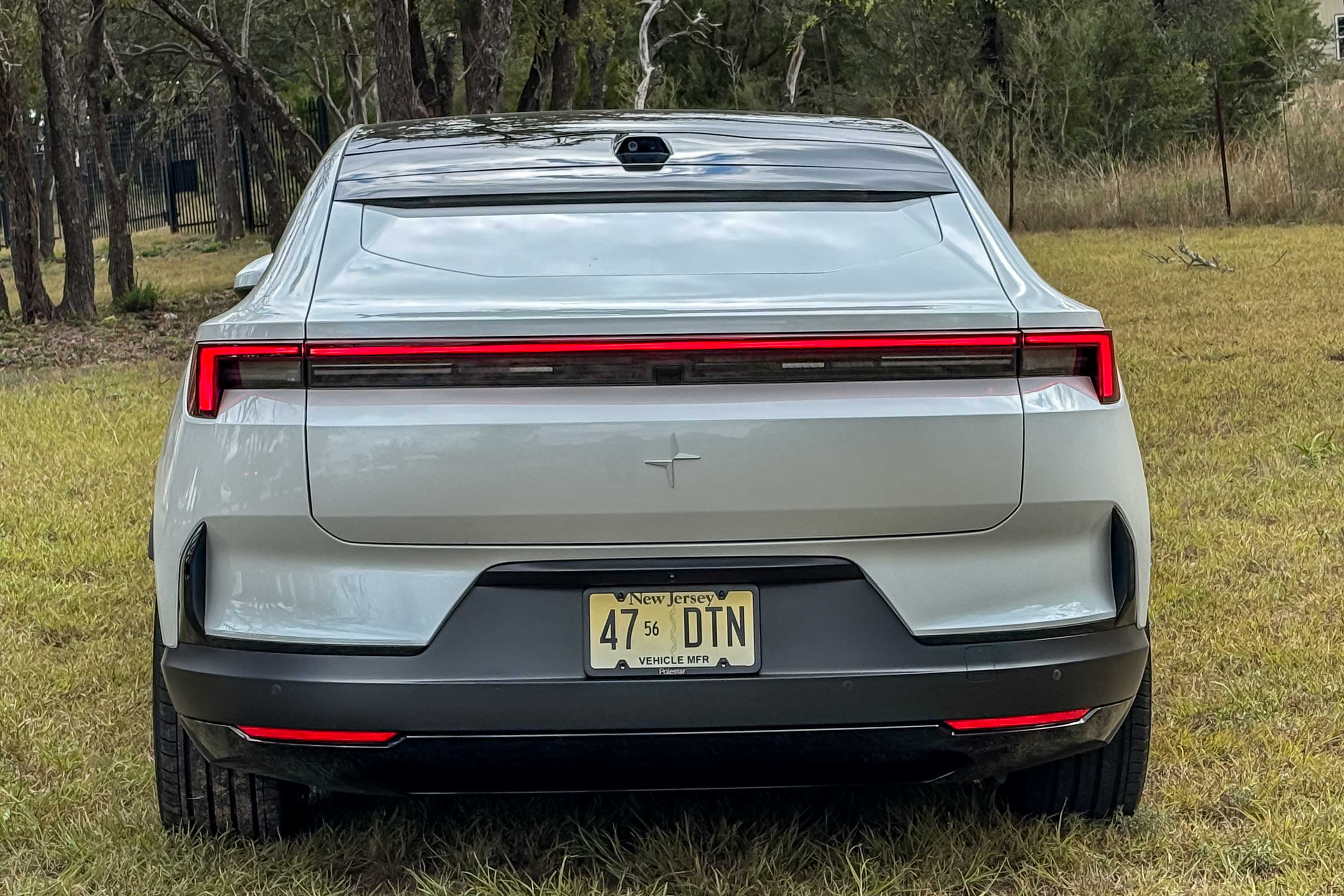

2026 Polestar 4 Review: Summary
The base price for the base, single-motor, long-range Polestar 4 comes to $57,800 — including the $1,400 destination charge. Plan to plop down at least $64,300 if you want to get all-wheel-drive traction and pep.
Finally, my test car with the optional Snow premium paint ($1,300), 21-inch wheels ($1,800), and Plus pack ($5,500) slides in a hair below $73K ($72,900). To put it in premium crossover SUV terms, you basically get a Mercedes-Benz GLC-size vehicle for GLE money.
But you also get beautiful design, Google-powered user interface, and blissfully quick electric response. As Polestar slowly but surely diverges from Volvo, it’s starting to develop its own style and personality. Frankly, one that’s younger and cooler than its former parent. And Polestar develops its cool in an environmentally sustainable way.
If you’re lucky enough to have the aforementioned levels of disposable income. The 4 delivers a package full of smart ideas, ease of use, utility, and enough old-school driving pleasure to make it a great choice for a great many people.
Read the full article here




